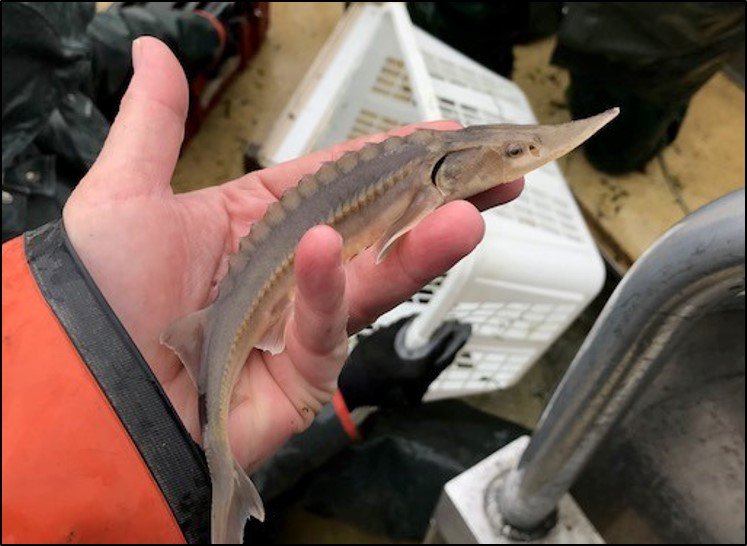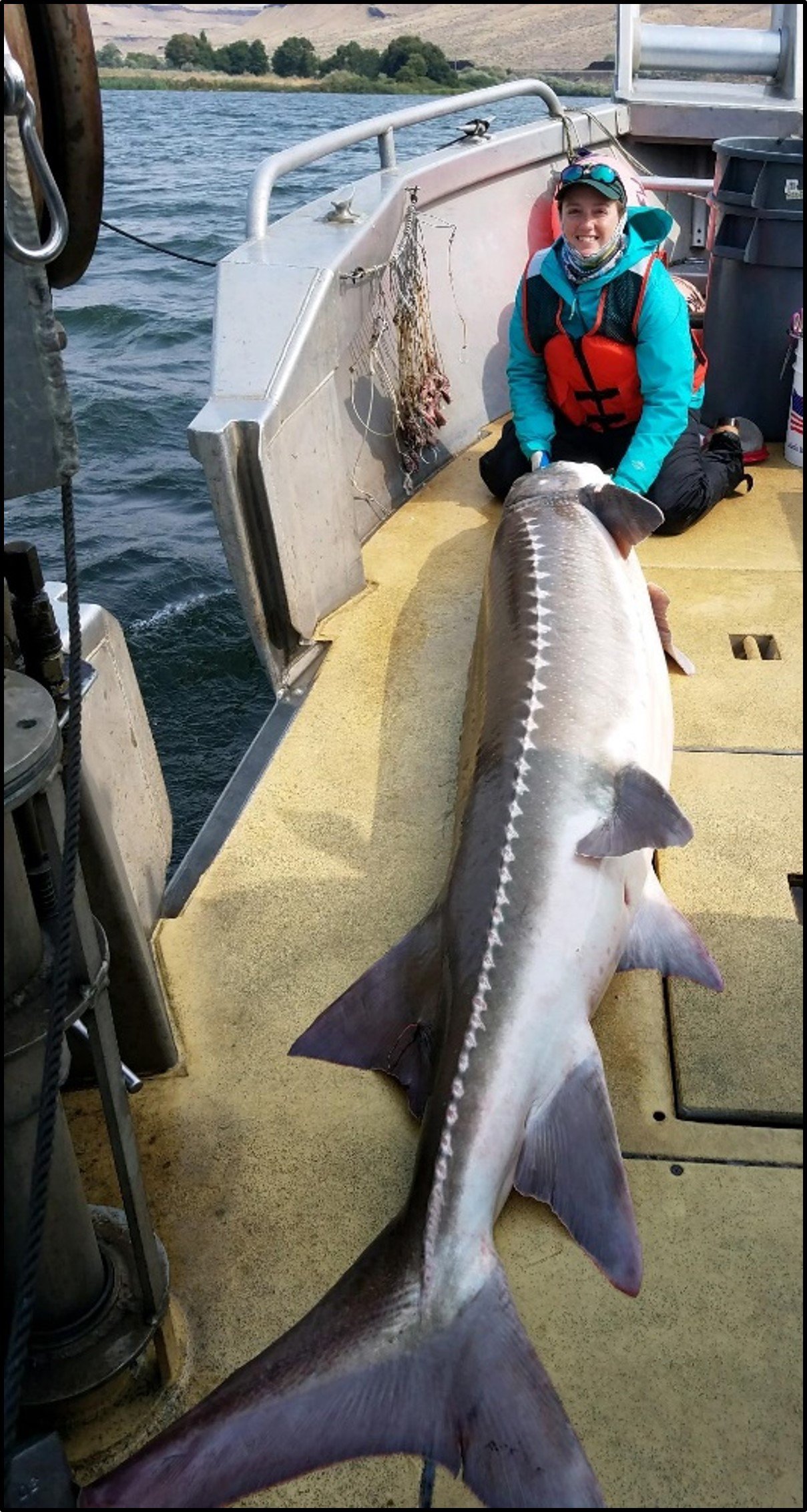Biologists Report: Sturgeon Are Doing Well Below The Dalles And Bonneville Dams, Not So Well Farther Upriver
- May 14, 2020
- John Harrison

The biggest and longest-lived fish in the Columbia and Snake rivers, White Sturgeon, are doing well downstream of Bonneville Dam and in the river between Bonneville and The Dalles Dam. But they are not doing as well between John Day and McNary dams, and their status between McNary and Priest Rapids dams and in the pools behind three dams on the lower Snake River (Ice Harbor, Lower Monumental, and Little Goose) is not well understood because the reservoirs are sampled infrequently.
Sturgeon biologists for the Oregon and Washington departments of fish and wildlife and the Columbia River Inter-Tribal Fish Commission (CRITFC) provided a status report on the species at the Council’s May meeting. Briefly, they reported:
The sturgeon population in the Lower Columbia and Willamette rivers is “not ideally where we would like to see it, but it is not at a level that causes concern,” said Peter Stevens of the Oregon Department of Fish and Wildlife.
There has been a steady increase in the number of harvestable sturgeon (legal length 38 to 54 inches from tip of the nose to tail fork) since 2013, but production of juveniles has been declining. The reason could have to do with inadequate river flows in the spring, when sturgeon spawn, and also harassment and predation by sea lions, Stevens said.
“Sturgeon is a classic example of a fish that plays the long game,” he said. If they don’t like the conditions or are harassed, for example by sea lions, they won’t spawn, and because sturgeon females are ready to spawn only about every five years, that could have an impact on the population. Since 2005, Steller sea lions, one of two sea lion species in the Columbia and Willamette, appear to have deliberately targeted sturgeon, Stevens said. They may be chasing sturgeon away from their preferred spawning habitats. Meanwhile, the number of California sea lions, the other species, is declining. The reduced numbers may be because in the spring they are hazed at, and in some cases removed from, places where fish congregate, such as Bonneville Dam and Willamette Falls.
The sturgeon population in the river behind The Dalles Dam “is neither good nor bad,” Blaine Parker of CRITFC said. “Certainly we could have a few more fish in there, but right now it is holding its own.”
The population between John Day and McNary dams, though, “has not seen recruitment for a number of years,” Parker said. That population, he said, “is our prime candidate for supplementation” with hatchery-reared fish, as the reservoir could support a larger population. Supplementation of that population is a key element of the CRITFC Sturgeon Supplementation Master Plan, he said.

Little is known about sturgeon in the Columbia between McNary and Priest Rapids dams, and in the reservoirs behind dams on the lower Snake River, said Laura Heironimus of the Washington Department of Fish and Wildlife. That is because, unlike other populations in the lower Columbia below Bonneville, which are sampled annually, or between Bonneville and McNary Dams, which are sampled on a rotating basis every three years, sturgeon above McNary have only been sampled a few times since the mid-1990s, she said. Some areas were sampled in 2018 and 2019, limited by the funding that was available, which came from cost savings from other projects in the Council’s fish and wildlife program.
While the population in the reservoir behind Lower Monumental Dam appears to be of a healthy size and weight, the sturgeon are getting older, not more numerous, and this may have something to do with the productivity of the habitat and prey availability to support a larger population, she said. “You want to see up to 95 percent of the population juveniles, but that is not happening,” she said. More research and monitoring is needed to better understand the status of the populations.
“It is important to have consistent monitoring to evaluate changes in these populations and develop conservation or management recommendations,” she said. In light of the limited amount of information available that suggests declining abundance and a lack of recruitment, sturgeon harvest has been closed in the Snake River, upstream of Ice Harbor Dam, since 2015. Similarly, a lack of recent monitoring data led to the closure of sturgeon harvest between McNary and Priest Rapids dams this year.
Lack of funding limits sturgeon sampling throughout this stretch of the Columbia and Snake rivers. A new proposal to fund additional surveys was proposed through the Council’s fish and wildlife program this year; however no new funding has yet been identified, she said.



